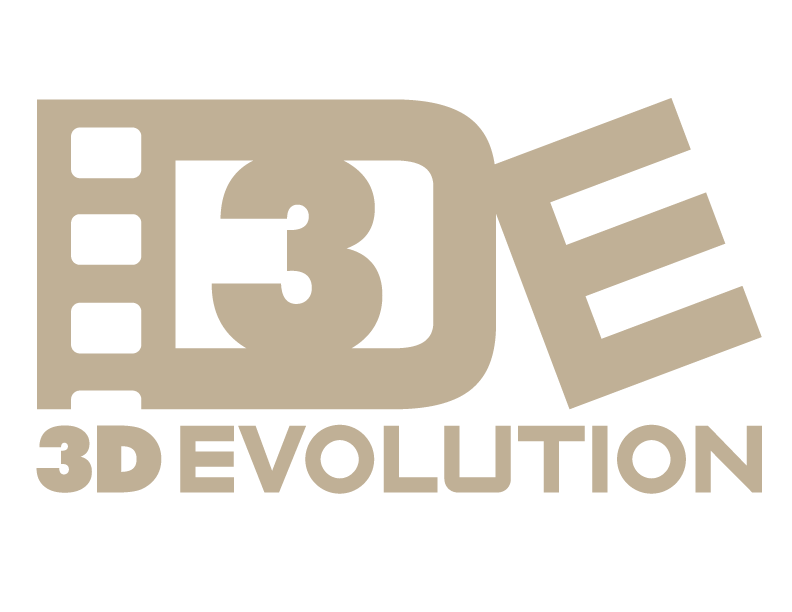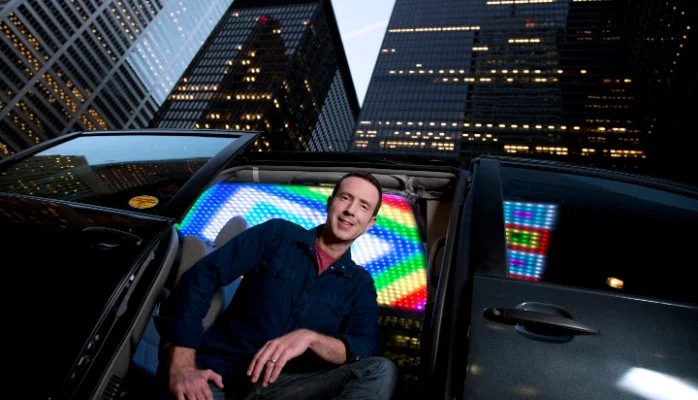by Adam Growe
Apr 12, 2016
For Cash Cab fans and contestants alike, people are thrilled when they get a chance to meet me… so they can ask about the lights inside the cab. The disco-floor-like ceiling panels are, by far, the sexiest part of the show for many people. Fortunately, as a proud “Host”, it wasn’t difficult for me to get used to being upstaged by high tech. That’s why I’m excited to be working with 3DEvolution on 3D tech that’s ahead of the curve and attracting more attention than I ever will in any dimension.
For the most part, I make my living putting other people in the spotlight. As a Host or MC, that’s my job. Introduce the stars, make it easy for them to shine, bring out the best of everyone. It’s one thing I’m not shy about claiming to be very good at. Sometimes it’s an easier task than others. There are stars who need little introduction, or bolstering; they command attention and have no problem holding it. The same can be said for inanimate objects like technology.
Most people didn’t realize that we were using leading edge HD cameras and flash memory technology to make Cash Cab. Castlewood Productions was the first company to use this tech in Canada, essentially creating a fully mobile television studio. The seven small HD cameras were strategically placed inside and atop the cab and rarely got any attention. Only when the flash memory cards were being swapped out was the rear hatch door open for people to see the recording decks stashed in the back of the minivan where you’d usually find baby strollers and hockey bags. But, the ceiling lights were front and centre. The tech used to create the LED panels and connect them to a touch-screen computer with which to custom design patterns and colours was expensive and moody. Often production was delayed due to tech issues with these lights. But, that didn’t stop them from stealing the show. Imagine- being upstaged by a high tech Diva!
There is every chance that the innovative stereoscopic 3D 360 experience being created by 3DEvolution will cast a shadow on content providers, like me, with whom they are working. It really, really is THAT cool. Again, I don’t mind. At the same time, once the novelty of the 3D tech levels off, it’ll be important that the content distributed through this new lens still engages an audience. That’s what makes 3DEvolution particularly special. They’ve taken the initiative to design and deliver a state-of-the-art tech platform and are also passionate about creating content that is entertaining, interesting and exciting.
In our first venture, it made sense to demo an experience similar to Cash Cab. I took several groups of fun passengers for a ride around Vancouver in a Cadillac SUV asking them some trivia questions from my Adam Growe Quiz Show catalogue. The day we scheduled production it rained. (It’s Vancouver, duh!). But, Kit and Dirk encouraged me to proceed, confident that the tech would still capture the city and offer a fun glimpse into what their rig can offer.
There are other ideas being assembled, but, if you always dreamed of hailing the Cash Cab, this is virtually the closest you will ever get. Wearing the full headset gear, it’s pretty much like putting you in a vehicle with me. Even the more accessible options, like holding your mobile device up and rotating it around, or mouse-scrolling on a laptop, or desktop to pan at your leisure, are still amazing 360 tech experiences.
We plan to take more people for 3D 360 rides around the city and other places. My next 3D tech road trip will be at the wheel of a McLaren 650S Spider. If you happen to stumble across us, you won’t find any flashing ceiling lights in the vehicle. But, at 0-60MPH (97KPH) in 2.9s, once again, I won’t be in the spotlight.
Check out this article in The Huffington Post about how excited people are in the industry about #3DEvolution and the team with which I’m fortunate to be working.
Click here for my other blogs, videos and pics.






